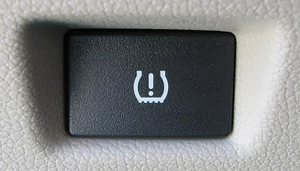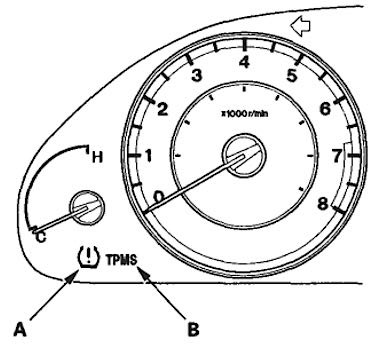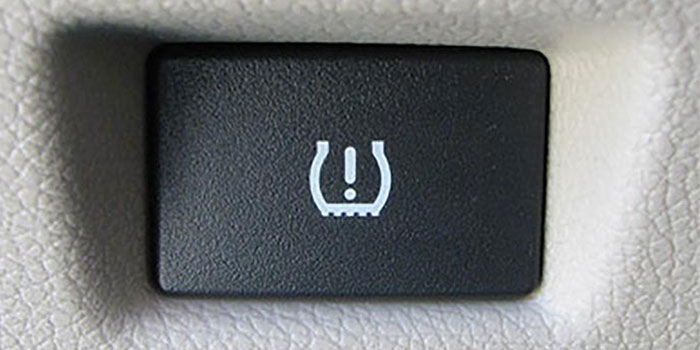 Honda TPMS can be one of the more difficult systems to program in new sensors, relearns and calibrations. But once you know the basics, it is easy to service these vehicles.
Honda TPMS can be one of the more difficult systems to program in new sensors, relearns and calibrations. But once you know the basics, it is easy to service these vehicles.
Honda direct TPMS are different compared to domestic TPMS because they require a scan tool or a TPMS tool that connects to the OBDII port to program sensor IDs and positions. There are no special tricks or procedures to avoid this process. However, there are exceptions to the rule such as with the Honda Pilot (automatic relearn) and vehicles that have indirect TPMS like the Civic, Accord and other models manufactured after 2012.
Most dedicated TPMS tools can activate the sensor to collect the sensor ID and its position on the vehicle. It then feeds the information through the OBDII port to the TPMS module. It is possible to key in the sensor IDs using a scan tool that can access the TPMS module.
 Reaching a speed of 28 MPH is the magic number for Honda direct TPMS. Once the vehicle has reached 28 MPH for at least one minute, it confirms the sensor signals, IDs and pressures. The speed is not detected by the sensors, it is detected through the serial data bus and the TPMS module. Honda reasons that at this speed, there is less of a chance of interference from other sensors and radio frequencies.
Reaching a speed of 28 MPH is the magic number for Honda direct TPMS. Once the vehicle has reached 28 MPH for at least one minute, it confirms the sensor signals, IDs and pressures. The speed is not detected by the sensors, it is detected through the serial data bus and the TPMS module. Honda reasons that at this speed, there is less of a chance of interference from other sensors and radio frequencies.
If a customer comes in with a TPMS light on solid, inflate the tires and test-drive the vehicle at 28 MPH or more for at least one minute. The low tire pressure indicator should go off. The 28 MPH rule should also be followed after every relearn or reprogram procedure.
For indirect systems, there are three magic numbers that can be accessed by driving at 40-60 MPH for 20 minutes. The process is initiated by pressing the TPMS reset button or information center in the instrument cluster.
Codes
Hondas typically have two TPMS lights in the instrument cluster for direct systems. One light is the ISO-standard tread light that indicates that there is a low tire. The other is a TPMS warning/MIL indicator light. When a Honda TPMS detects a problem, the TPMS control unit sets a code, but shifts to fail-safe mode. It does not alert the driver to low tire pressures. Once the codes are set, the TPMS light will flash between 30-90 seconds and then remain on during the next key cycle. A healthy system will flash the light for two seconds and then turn off.
TPMS codes in the nonvolatile memory will not be cleared by disconnecting the battery. To clear a code, it will require a scan or TPMS tool that can communicate with the TPMS module. The memory can hold all the TPMS codes that could possibly be set. But, when the same code is detected more than once, the most recent one overwrites the previous one, so only the latest DTC of each type is stored.
When a flat tire is replaced with the spare tire on a direct system vehicle, the TPMS indicator comes on (DTC 32, 34, 36 or 38) because the system is no longer receiving the signal from the flat tire’s transmitter. This is not a problem with the spare tire.
Indirect Systems
Honda indirect TPMS does not have air pressure sensors inside the tires. Rather, they detect a low tire by comparing relative wheel speeds via the anti-lock brake system (ABS) wheel speed sensors. When a tire loses air, its diameter decreases slightly. The highly popular Honda Accord switched to indirect TPMS for the 2013 model year. Recalibration should be performed when the inflation is corrected or changed. The procedure does not involve any tools, but is intiated by either a TPMS reset button below the steering wheel or by using a series of button presses in the i-Mid driver information center. You can initiate the procedure, but let the customer do the driving.
Before You Start
1. Make sure the vehicle is stopped and in neutral or park.
2. Make sure all the tires are the same size and type.
3. Set the tire pressures to the recommended cold inflation values listed on the driver’s door jamb.
4. Turn the ignition on.
Calibration for 2013-’15 Accord (except Touring), 2014 CR-V and 2015 Fit
Press and hold the TPMS button underneath the left side of the dashboard until the Low Tire Pressure/TPMS indicator blinks twice. If the indicator does not blink, press and hold the button again. Calibration will complete after 20 minutes of cumulative driving at 30 to 60 mph.
Calibration for 2013-’15 Accord Touring, Hybrid, Plug-In
1. Using the display and steering wheel controls, select Vehicle Settings, then press the SEL/RESET button. TPMS Calibration will then come up.
2. Press SEL/RESET again. The display switches to setup where you can select either cancel or calibrate.
3. Select Calibrate, then press the SEL/RESET button.
If successful, you will see Calibration Started. If you see Calibration Failed to Start, repeat steps 2 and 3. Calibration will complete after 20 minutes of cumulative driving at 30 to 60 mph.
Calibration for 2014 Civic
1. Use the i-MID and steering wheel controls, press MENU and go to Vehicle Menu.
2. Select Customized Settings, then press the SOURCE button.
3. Select TPMS Calibration, then press the SOURCE button. The display switches to a customization screen where you can choose between Cancel or Initialize.
When calibration is complete you will see TPMS has been initialized followed by a return to the customization menu. If you see Unable to Initialize TPMS, repeat steps 3 and 4. Calibration will complete after 20 minutes of cumulative driving at 30 to 60 mph.
Article courtesy Brake & Front End.














